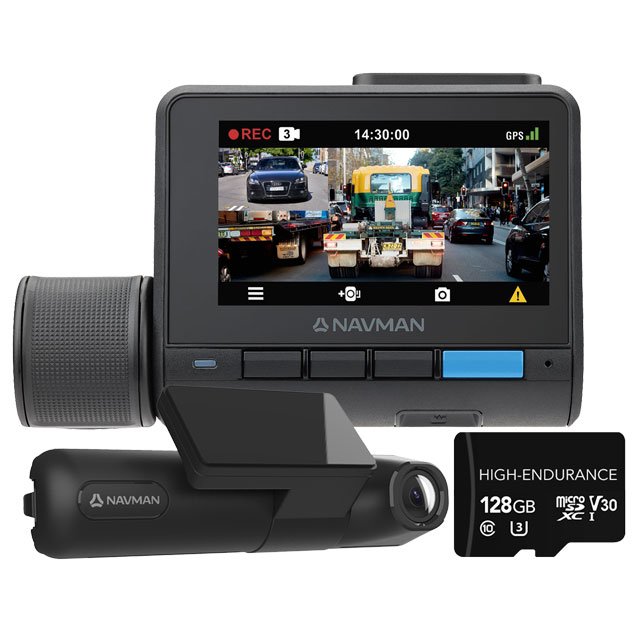
While many modern vehicles now come with inbuilt surround cameras, there are many cars on the road in Australia that require third-party dashcams to enable the same level of visibility, security and peace of mind. A dashcam can provide valuable evidence after a crash, record unexpected road events and even help deter theft or vandalism when parked. Yet before you install one, it’s worth understanding how to do so legally – and how privacy laws apply when recording on public roads.
Yes — dashcams are legal to own and use in every Australian state and territory, provided they’re fitted correctly and don’t obstruct your view of the road. The key rules vary slightly between jurisdictions, but the general principles are the same.
Best practice:
Correct placement of a dashcam unit is crucial to avoid obstructing the driver's vision.
Most dashcams operate on a simple “set and forget” basis, starting automatically when you turn the ignition. They continuously record video on a memory card, overwriting the oldest files once full — a feature known as loop recording.
When looking to buy a dashcam, consider:
Drivers may rely on dashcam footage to prove who is at fault in a collision. Be mindful of these rules to ensure your footage is legally admissible if you need it.
Choosing a dashcam comes down to what you want it to do. Entry-level models typically cover the front view only, which may be enough to capture incidents ahead. But for complete protection, especially in busy urban traffic or multi-vehicle situations, a system that records multiple angles can make all the difference.
Australia’s leading dashcam brand, Navman, has launched the MiVue™ True 4K Pro Surround, the first of its kind to record front, rear and side impact zones in ultra-clear detail. This three-camera setup captures everything from subtle sideswipes to rear-end collisions, making it easier to see exactly what happened.

The system combines a True 4K Ultra HD (8 megapixel) front camera with True 2.5K (5 megapixel) rear and side cameras. The side camera, neatly built into the rear unit, records vehicles merging or passing too close; scenarios that single-lens systems often miss.
Beyond incident recording, the MiVue™ True 4K Pro Surround doubles as a real-time safety assistant. It offers speed, red-light and school-zone alerts, along with ADAS features like lane departure, front and rear collision warnings and driver fatigue alerts - helping you stay aware and avoid costly mistakes on the road.
If an accident does occur, the dashcam automatically saves the footage and sends it straight to your phone via EZYSHARE Wi-Fi, ready to forward to police or your insurer. And with Parking Mode (enabled with the optional MiVue™ Smartbox IV), it continues to monitor your car while parked, capturing any hit-and-run or attempted theft, offering reassurance that lasts long after you’ve switched off the engine.
Whether you’re protecting your no-claim bonus or simply want another layer of security, a surround-view dashcam like the MiVue™ True 4K Pro Surround can make sure you’ve always got your side of the story.
Click here for a limited time offer.